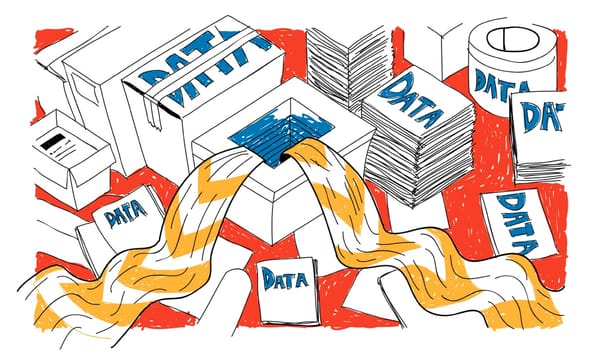Timeless advice for becoming a player in the field of UX
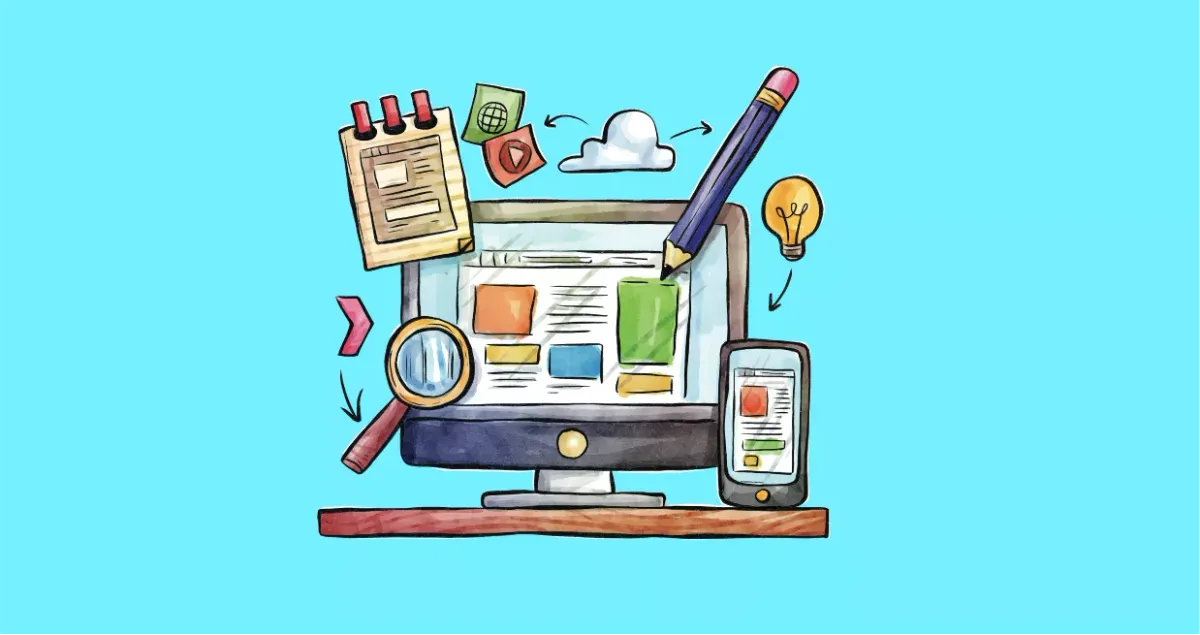
More and more people are reaching out to me, asking for advice on how to get into working more with UX. This is the post I would like to be able to point everyone towards.
But first, let me tell you how I got here.
My story
I didn’t study UX. User experience wasn’t even close to a common term when I went to school, or college. I’m forty. I studied communication science. Turns out that was actually a pretty good foundation for what I do. Not primarily in the sense of giving me better tools and making me a better UX:er, but in the sense of giving me the terminology to better describe the usefulness of what I do and how it fits into the big picture of organizations.
Gaining acceptance for your role in an organization can actually often prove be one of your bigger challenges.
What I really wanted to study though was journalism, as I’ve been writing extensively since the age of ten — and I developed a thorough understanding of how to write for engagement, gaining insights about how to approach different people with different messages. Of course, the fact that I got my first computer at the age of eight, in 1982, has also been beneficial to working with digital communication.
You need to understand though that I have no formal education in working with the web, or with interaction design, or any kind of design work really. And yet today I give talks and teach at colleges and universities around these subject areas. And I happen to run a successful, profitable business doing UX work.
So you’re not going to get a list of what classes you need to attend, what companies to approach, or what software to buy. I am certainly a firm believer of doing what you love, loving what you do and creating your own career path.
And the true nature of UX is really part of anything and everything we do.
Because you. Can not. Escape. Your brain.
Pursuing a career in UX
Thinking about how to give advice to someone pursuing a career in UX today, when so many professionals are still arguing about what that even means, I have to take a step back and look at the big picture of what makes me tick.
Let me try and outline the behavioral patterns that are common to many UX:ers.
Obviously, identifying that you want to work with UX is a fantastic first step. Understanding how that desire comes about in the people who have approached me I can see that the big attraction is the user part. In a broader sense: the desire to do help humans feel less pain when interacting with tools and services. Maybe even enjoy interacting with them (crazy thought!)
So either your motivation can be helping organizations make more money by attracting more loyal users OR helping people not burn out because they are exposed to ego-depleting systems every day. Whatever tickles your fancy.
The tendency in general is to regard the core of UX as taking away stuff that is ruining how users feel and interact with a service, and adding stuff that enhances the willingness to use the same service.
Having understood this you’ve already come a long way in you inner journey. Now let’s get to helping you make that journey a part of your purpose on Earth.
My list of solid cornerstones for working with UX.
1. Understand ego depletion. No. Really understand it.
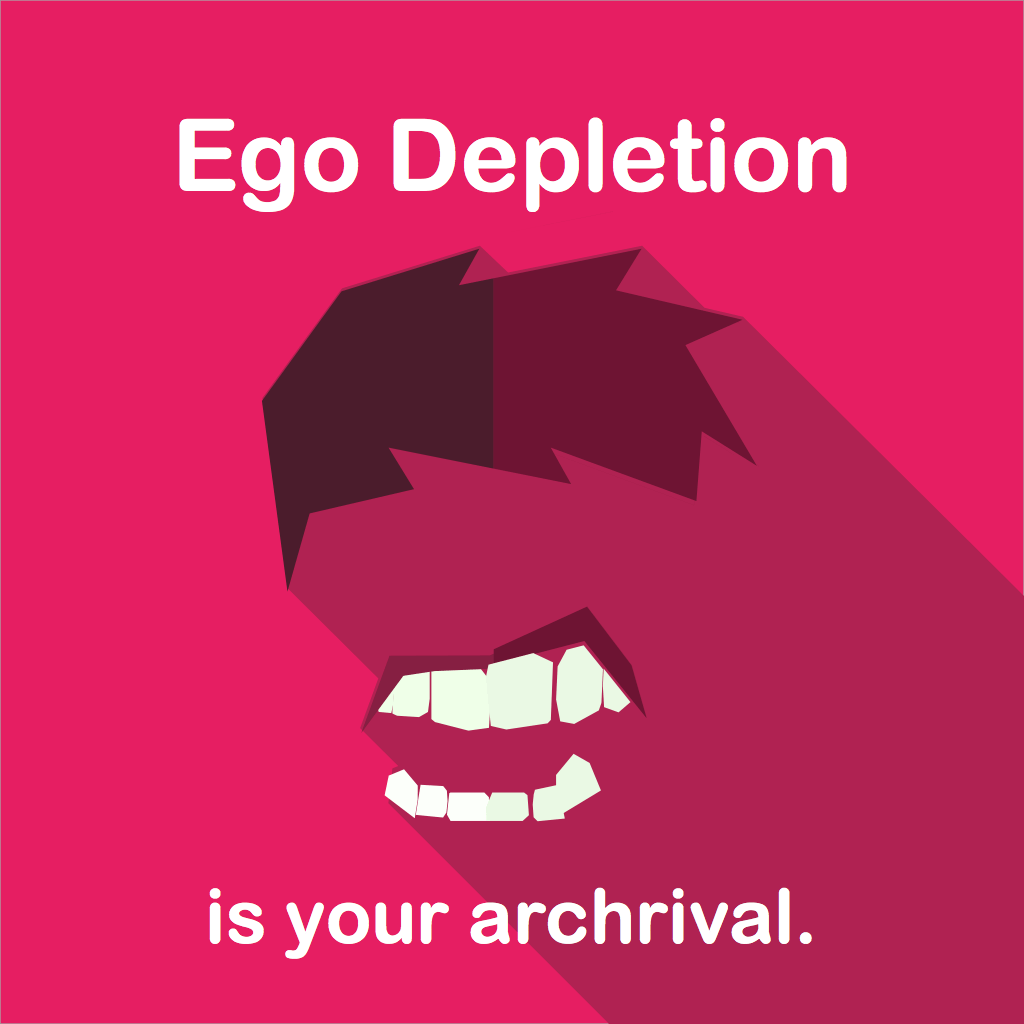
In my talks I often reference the cookie-radish experiment conducted by Roy Baumeister, giving roots to the term ego depletion.
The widespread conclusion of studies conducted by Baumeister and his colleagues is that humans have a limited amount of cognitive energy. All conscious effort requires energy and when that energy is running low, humans become worse at maintaining self-control, poorer at decision-making and have an increased tendency to avoid anything that requires more cognitive energy.
The term ego depletion is also closely related to the concept of decision fatigue.
What does this mean? It means that products and services that cause regular friction and frustration will cause people to fumble and make mistakes, make wrong decisions about what path is best for them, and if possible avoid the service altogether.
This is where the concept of UX excels, at identifying all the touchpoints where people have a hard time with products and services (online or offline) and working hard at fixing those weaknesses.
Some of those remedies could be:
- eliminating bad touchpoints completely,
- making interactions feel less complicated by themselves or in comparison to any alternatives,
- making interactions appear and feel entertaining, giving something back to the user,
- making the reward — or content — of such desirable quality that the tough interactions are just worth it,
- and remembering to give time for the user to rest and recover between interactions.
There is also the option of actually replenishing cognitive energy, through design that gives rise to the production of positive energy, and in essence: endorphins. This is usually where designers turn to the concept of gamification as well as try to appeal to more senses with multimedia.
Of course, if your product is great, then it should actually already be helping people realize a positive change in their lives. I call that giving users superpowers.
You need to be certain of this, though: Ego Depletion is your archrival.
2. And leave your own ego at the door please.
The concept of the usability guru has been with me my whole career. Go to the guru at the top of the mountain (or in cubicle 33A), ask where the button shall be placed — maybe even what color it should be — and do whatever the guru says.
Forget the guru.
A real UX advocate will recognize that her role is not to give general advice but to dig deep into users’ desires, wishes, challenges and fears — watch for patterns — and marry these insights with the same type of insights about the organization trying to connect with the users.
Also: developers, customer service personnel, the receptionist… they all have great ideas. Yes, even middle managers might have some great ones! Your job isn’t to tell people what to do, your job really is to get them into the mindset of thinking about and understanding the challenges of the end-user. Make them feel empathy for the people on the receiving end. You’re not going to be there to pick at every detail, it’s much better if everyone understands the challenges, the goals and priorities and can work that into how they approach their everyday work.
The user is important, but the user is also part of a bigger puzzle.
If you are not prepared to sit in a meeting and have your design proposal challenged by a rookie javascript developer — recognizing that her ideas are valid and in many cases can be more viable than your own — then you are not there yet.
Take a deep breath and realize you are not sitting with all the answers. The users are. Other people are.
3. Listen.

If you’re not being surprised by a lot of the stuff you learn, you’re probably not asking the right questions, or watching for the right things.
For example: many users I interview and observe have various troubles using a computer. Some are taken aback by the thought of using a trackpad on a portable computer. Some don’t understand the concept of opening the same website in two different tabs. Some can’t copy/paste content using the keyboard. Things that I know would make their lives easier.
But I’m not there to teach them how to use a computer, I’m there to adapt my user interface (if that’s what I’m designing) to the way they actually do use a computer. Within the context of THEIR lives, not my fantasy of how perfect users should be.
One of your most important competencies to develop may well be the ability to conduct an open-ended interview where you actually listen to a person’s pain points well outside the realm of the specific service you are researching, can identify patterns in behavior, and not feel that twenty seconds of silence is awkward.
Silence means a person is thinking. Don’t interrupt them. It’s those thoughts that will help you realize what problems to solve.
4. Not everything can be easy.
One of the most common misconceptions about usability and UX is that it’s about making everything easy. And what happens is that you can be stuck in 2-hour meetings discussing what font size a breadcrumb link should be.
But UX is about real people. For it to be easy your product would have to be about displaying monosyllabic chants with accompanying sound. But we can’t all be heeeeeeeey.com — Anything beyond that actually requires some level of effort.
What you can work with is minimizing any effort required, but also with the intent to create more enjoyable experiences. For that to happen you usually need to affect peoples’ lives momentously not only within the context of a user interface, but within the context of everyday habits and routines.
You need to realize that a user interface is an enabler but also a hindrance on the way to what you really are trying to do for users:
- Alleviate people’s feelings of fear, boredom, uncertainty, pain, rejection and inadequacy.
- Raise their feelings of pleasure, mastery, hope and social belonging.
Think again. Humans are not easy. They’re complicated. That’s why UX is a thing.
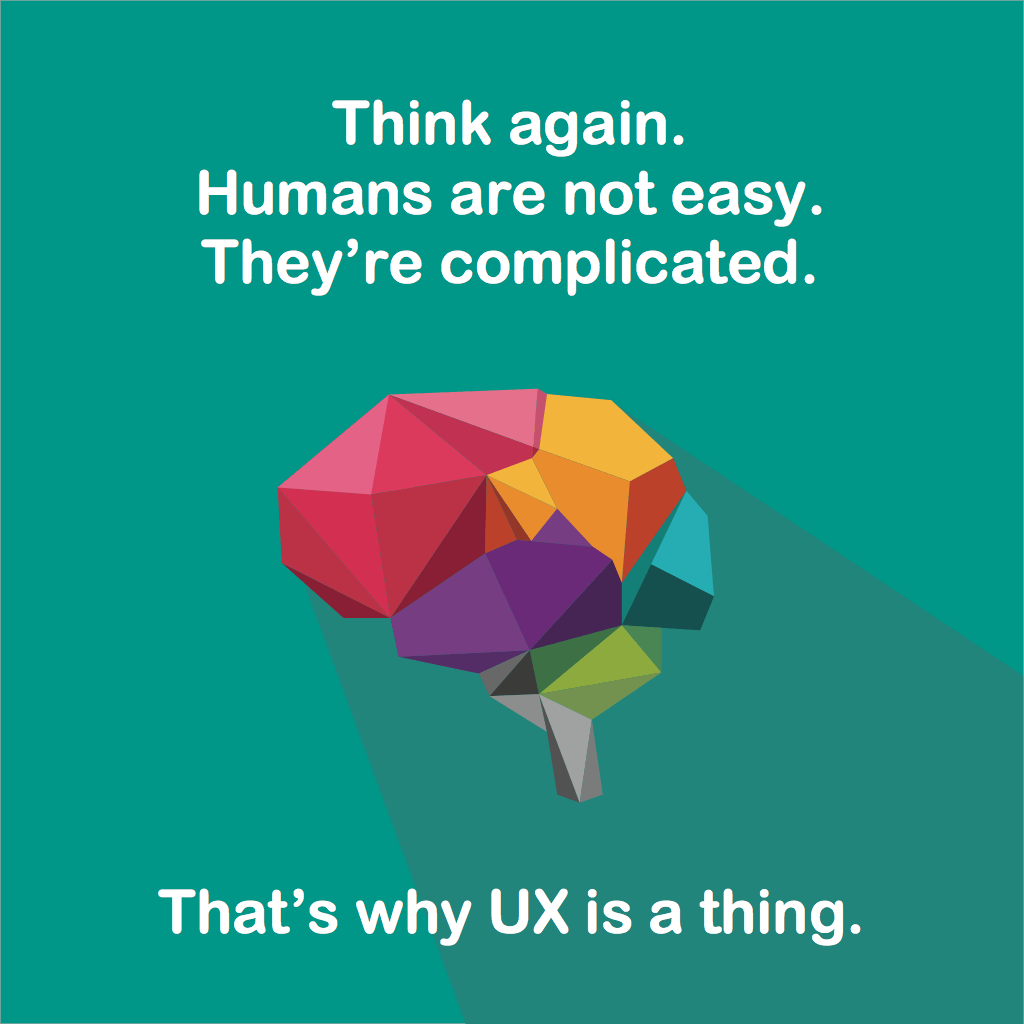
5. You can’t work your magic in a secluded room.
You are not always the creative who comes up with the solution. But you are the person who makes sure the solution works for the user.
The UX responsible can often be perceived as a quite lonely role. But you need to be making friends all over.
- You need to be making friends with customer service staff because they’ve been screamed at by real users with real problems.
- You need to be making friends with the business strategists because they can tell you what makes certain features financially viable or not.
- You need to be making friends with people in product maintenance because they can tell you what features will cost money just to sustain.
- You need to be making friends with like-minded people on Twitter, because they can give you the energy and advice you need to keep pushing for more UX work to be done.
- And no, I did not forget your best friends forever — the users — who you need to be pals with for reasons that should be obvious this far into the article.
So my friend, what you need to excel at… is communication. Other people need to be confident that what you are saying is based on a solid understanding of the business, the product and the people on both ends. You need to be saying stuff like: “I’ve done this research and I’m confident that…” “I’ve aligned these tasks with business goals…” and “We have prioritized the functionality based on user insight, which has also been aligned with relative return on investment, affordability and urgency.”
In the end, whatever product or service you deliver, more often than not you yourself aren’t going to be the one using it, you aren’t going to be the one maintaining the code for it, giving support for it, selling it, writing the manual for it, fretting about it at midnight and responsible for funding it.
You need to befriend and understand all of those people because a service that doesn’t work across the board and makes anyone along the line miserable will in the end make users miserable, no matter how shiny and user-friendly it is. That’s why we obsess about story mapping.
Pro tip: make screencasts, short explainer videos and record any demo presentations of your product you may have (best case you do these every three weeks if you work in sprints). Make sure to share these often with key stakeholders to help them feel involved and give them opportunity to provide feedback.
6. Work UX into your life.
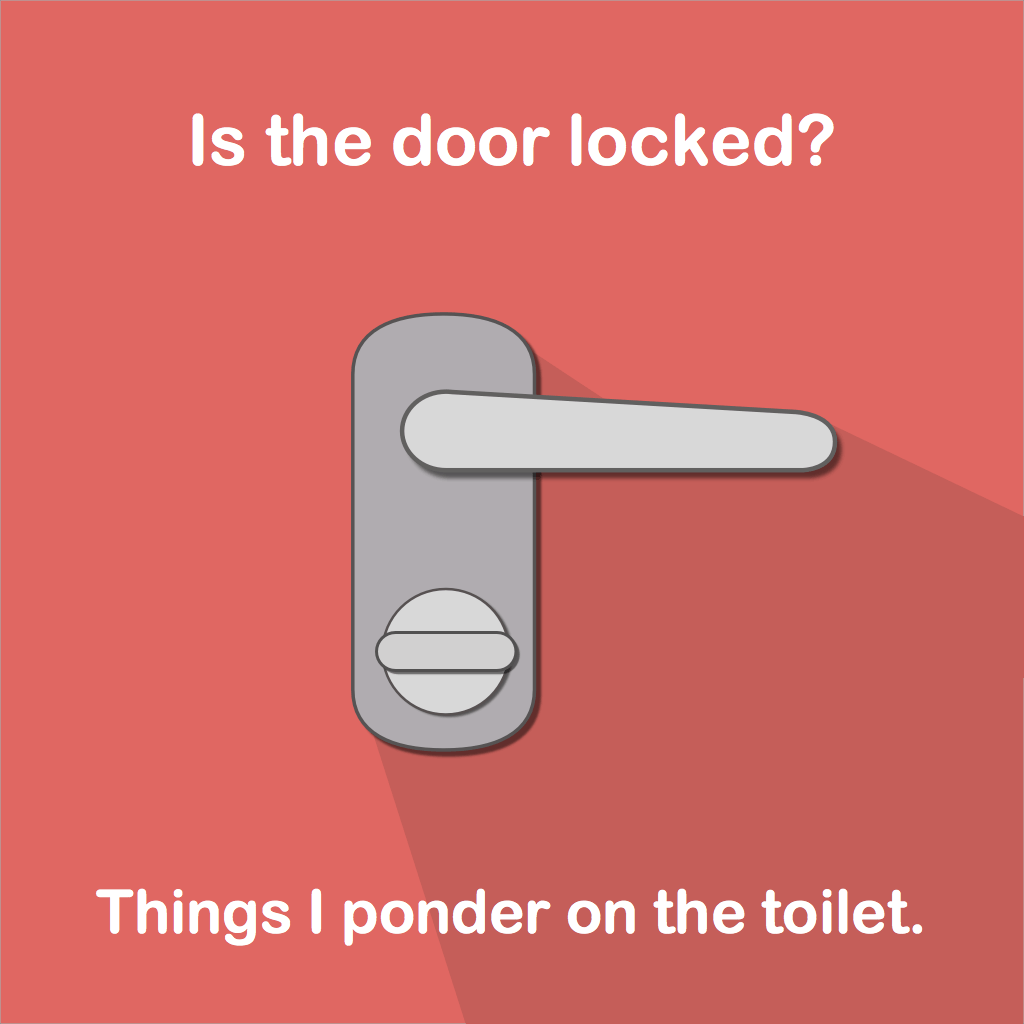
Remember this: if you get into UX now chances are pretty high you won’t be calling it that in 10 years time. Because more and more you understand how it is an integral part of what everyone in an organization should be doing.
If you really are passionate about UX chances are pretty high you are already commenting on anything and everything in your life, noting how the logistics of the restaurant could be better, how managers use the wrong words when sending out newsletters, how the parking payment system is awry, how the waiting time in the emergency room could be put to better use or even how the inside of bathroom doors fail to signal to you if they are locked or not.
Don’t stop doing that.
Yeah ok, but what can I do now?

So I realize that these high-and-mighty life lessons maybe aren’t helping you take the next step. But I really, really wanted you to consider them before taking the plunge. So what should your next step be?
Well actually, here are six more tips (another list! yay!) to gently push you in the right direction:
- Put UX on your business card. Seriously, that’s what I did. It’s a mindset, either you have it or you don’t. I’ve met UX Developers, UX Architects, UX Strategists, UX Zebras. Well, maybe not the last one, but you get the idea.
- Start doing UX work. Learning by doing has been my mantra like, forever. If you have a job today, that’s awesome. What you need to be doing is fitting stuff like research, interviews, story mapping into your work. If you don’t have a job today, that’s awesome too. Start offering UX services on Fiverr. Do interaction design, learn to handle clients, build a portfolio and get your resumé out in front of employers or higher-paying clients. Be sure to document how you are already doing UX work, how the changes you fight for and implement have an impact on the user experience. Chances are you are already doing UX work without even calling it that. The trick is to bring that up to the front and show it off.
- Start calling to UX meetings. Ok, maybe first you start sharing articles and insights around the office, all relating to creating better user experiences. Everyone will be all: “Who is that?”. And sooner or later people will start responding… “I think that’s the UX specialist”.
- Make a research plan and put it up on the wall. Make sure people see it. In fact, put every visual output you produce up on a wall. It puts you in control, gives you a birds-eye view, jogs your memory and tells everyone you are confident enough in your data to show the world what you are doing. Have you ever watched a crime thriller where the detective fills a wall with photos, leads, newspaper clippings and then places red string between things that are related? (Of course you have.) That’s what your wall should look like. You know, without seeming like you’ve lost your wits.
- Attend conferences and workshops. Hook up with me on social media and I can push you in the right direction. Also, check out Lanyrd. There are bound to be some meetups in your area. And you might even consider starting your own meetup group; way to take the lead on the UX discussions going on in your area! — If in Stockholm, join me for a UX Marshals meetup. On UX Podcast we talk about a fair number of conferences as well.
- Collect and share stories. Remember the time I told you to keep observing your environment for UX fallacies? (Hint, it was seven paragraphs ago). Those stories and more from your everyday work is what will grab people’s attention and make them feel more comfortable with entertaining UX as more of a core part of their operations. When people can relate to stories from everyday life (like mobile phones and parking meters) — and with your help realize how this is closely related to how their service is perceived by other people — that’s when you know they’ll let you in to play.
Because seriously, UX has been my playground for years and years. Truly understanding that your work, which actually means most people’s work, somewhere along the line affects whether real people frown or smile is enough for anyone to boost their job satisfaction.
Did I say job? I meant passion.
You may also want to read: Slaying 5 UX myths for the good of mankind.

